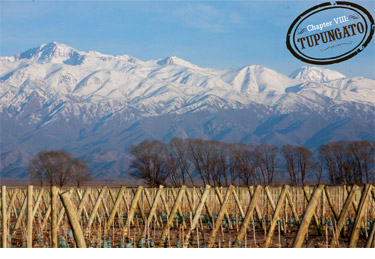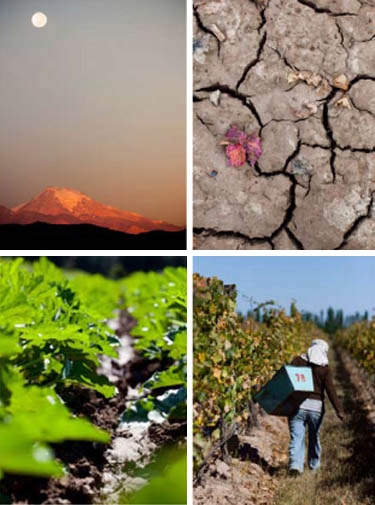|
|
||||||
 |
|
|||||
|
|
|
|||||
|
|
|
|||||
|
|
|
|
|
|
|
|
The ABC’s of High-Altitude Desert Viniculture Mendoza is a winemaking region like no other. From each and every location, the west is defined by the snow-capped Andes. As you follow the curve of the Andes from west or south, the mountain views become more and more prominent—you have the feeling that the mountains lie just a stone’s throw away. Mendoza’s wine country, located in the high plains by the foothills of these majestic peaks, has a privileged terroir: very cold nights, intense sunlight, and a signature varietal, Malbec, that is capable of making profound wines. But Mendoza also has something else: high altitude. Situated in valleys at altitudes between twenty-seven hundred (823 m) and five thousand feet (1,524 m) above sea level, the region benefits from a dry continental climate, lots of sunshine, and a pronounced night-day temperature differential. Altitude has two important effects on grape growing: one is a cooling effect on temperature, and another is a dramatic increase in sunlight intensity. Greater heights mean lower temperatures. In Mendoza, the calculation is that for every one hundred meters (328 feet) of increased altitude, the average temperature decreases 1 degree Centigrade (1.8°F). Greater sunlight means thicker grape skins (the grapevine’s attempt to protect its seeds from the sun), which are rich in tannins and polyphenols—the flavor-giving compounds in wine—which explains why Mendoza’s high-altitude wines are so rich and flavorful. My father, Nicolás Catena, pioneered extreme high-altitude viticulture in Mendoza, and was the first to plant a Malbec vineyard at almost five thousand feet (1,500 m) elevation. He has been called the man who discovered and defined the benefits of high-altitude viticulture in Argentina. Studying the soils, climate, and sunlight intensity of high-altitude Mendoza, we found that our terroir (combination of soil and climate) was so different from that of France and the rest of the world that most of the Old World viticultural rules could not be applied here. In fact, the studies that we did at Catena in the early 1990s showed that in Mendoza we could perfectly ripen Malbec and Cabernet Sauvignon in places like Gualtallary, Tupungato, with a climate as cold as that of Burgundy (nobody would ever think of planting Cabernet Sauvignon in Burgundy). The lesson we learned was that our region has its own set of rules. |
|
 |
 |

